#otoe missouri
Explore tagged Tumblr posts
Text













Lewis and Clark met the Otoe and Missouria tribe on August 3, 1804.
#Harry Edward Stinson#Council Bluffs#Iowa#Lewis and Clark#Meriwether Lewis#William Clark#meeting#Otoe tribe#Missouria tribe#USA#travel#summer 2019#original photography#Lewis and Clark Park#Missouri River#Nebraska#Omaha#Lewis and Clark Monument#Lewis and Clark Monument Scenic Overlook#Lewis and Clark Monument Park#tourist attraction#landmark#Art Deco#Midwestern USA#220th anniversary#US history#3 August 1804#vacation#cityscape#landscape
3 notes
·
View notes
Text

Big Mo
View from the Bob Kerrey pedestrian bridge, of the sculpture by Mark di Suvero at Tom Hanafan River's Edge Park on the left bank of the Missouri river, Council Bluffs, IA.
The green of the grass and the vegetation desaturated to bring out the red of the sculpture.
MATERIAL: Steel DIMENSIONS: 75′ 8″ high with a base of 22′ 9″ x 32′ 9″ x 21′ 2″ DATE: 2014 LOCATION: Tom Hanafan River’s Edge Park Mark di Suvero’s sculpture, Big Mo, is located in the Tom Hanafan River’s Edge Park in Council Bluffs, Iowa, close to the banks of the Missouri River. The Lewis and Clark trail runs along the Missouri River passing the River’s Edge Park. On August 3, 1804, the Lewis and Clark expedition had an historic meeting with the native Otoe Indians at a place that Clark named Council Bluff in his journal writings. This was the first official meeting between Western Indians and representatives of the United States government. The present-day city of Council Bluffs was named for this site. di Suvero’s sculpture is located on the Council Bluffs’ side of the Bob Kerrey Pedestrian Bridge over the Missouri River. di Suvero says that his work has always responded to bridges. When he moved from China to the United States one of his first sights was the Golden Gate Bridge in San Francisco, that he said was gorgeous. He saw it as a symbol of the country’s freedom. He also responded to the Brooklyn Bridge when he moved to New York City. He said, “Living in the shadow of the Brooklyn Bridge I was encouraged to think big.” Both bridges and di Suvero’s works are made of steel and di Suvero thinks steel creates a different sense of space through the kind of framed structures that it can create. He says, “bridges have the symbolic knowledge of being able to reach from one person to another, and from one side to another, that has always fascinated human beings.”
3 notes
·
View notes
Text

NDN LAND
Just practicing…
#Ndn land#ndn#landback#nativemade#native art#native#indigenousmade#indigenous art#indigenous#yoeme#diné#otoe#otoe missouri#graffittiart#graffiti#graffiti mural#mural#black and white#littlechief arts#whitefeatherx#chiefpainintheass
2 notes
·
View notes
Photo

The Cultural Origins for the Names of US States.
u/A1t3rix:
For those who want to know the specific NA tribal origins
Alabama Choctaw
Alaska Aleut
Arizona Spanish/O'odham
Arkansas French/Algonquin
California Spanish
Colorado Spanish
Connecticut Mohican
Delaware English
Florida Spanish
Georgia English
Hawaii Polynesian
Idaho none
Illinois French/Algonquin
Indiana Latin
Iowa Iowa
Kansas English/Siouan
Kentucky Iroquoian
Louisiana French
Maine French
Maryland English
Massachusetts Wopanaak
Michigan Ojibwa
Minnesota Siouan
Mississippi French/Ojibwa
Missouri Algonquin
Montana Spanish
Nebraska Otoe
Nevada Spanish
New Hampshire English
New Jersey English
New Mexico English/Nahuatl
New York English
North Carolina English
North Dakota English/Siouan
Ohio Iroquoian
Oklahoma Choctaw
Oregon Unknown (French or Spanish)
Pennsylvania Latin
Rhode Island Dutch
South Carolina English
South Dakota English/Siouan
Tennessee Cherokee
Texas Caddo
Utah Apache
Vermont French
Virginia English
Washington English
West Virginia English
Wisconsin English/Miaman
Wyoming Munsee
407 notes
·
View notes
Note
Hey! I got three chunks of money to donate for Christmas and there's so many things that need support I haven't been able to pick where to donate them yet. Mostly I want to donate to indigenous communities and environmental protection, especially bc indigenous communities do so much amazing work to protect the environment that helping one can also help both. I saw your swift fox post and it filled me with rage- do you know if there's anywhere I can donate to help?
Hmm, I know that I have friends at this site who are a part of these Native communities, and they would be better people to ask for guidance on how to help and/or donate. I’m not really equipped to give a good enough answer; not really sure I have great recommendations. But I guess I’d like to share a couple of resources about reservations in the region. (This is the post being referenced, about the Fort Belknap reservation’s reintroduction of the previously-extinct swift fox to the prairies of northern Montana.) And I hope that, maybe, others reading this can supply some recommendations on where/how to donate.
-------
A couple of recent issues:
-- Fort Belknap Indian Community joined the Rosebud Sioux to launch a major legal case against the Keysonte XL project (run by Alberta fossil fuel company TransCanada, now known as “TC Energy”) in order to prevent the pipeline from being installed on/near their communities. In spring of 2020, after months of pursuing the case (Rosebud Sioux Tribe v. Tr*mp) the tribes achieved several victories in federal courtrooms in Montana.
-- In 2020, Fort Belknap formally declared a state of emergency partially because of increased risk of viral spread due to the influx of pipeline workers brought in by TC Energy to service pipeline construction.
-- Nearby, in June 2020, Fort Peck Assiniboine and Sioux Tribes began lawsuits against multiple agencies of the US federal government over Keystone XL pipeline, since the project’s route would threaten Fort Peck’s drinking water because the pipeline is planned to be built under both the Milk River and the Missouri River only a kilometer or so west of Fort Peck’s border. This would threaten the Assiniboine and Sioux Rural Water Supply System (which was left out of the government’s and oil company’s “arbitrary geographic scope of the [routine environmental health] assessment” of the pipeline project). Fort Peck relies on this water system because the local groundwater was poisoned, and the aquifer destroyed, by oil development during the 20th century. In 2020, activists demonstrated against construction of the pipeline which was taking place nearby at the US-Canada border. (Just this month, January 2021, one activist from Fort Peck was interviewed by BBC News regarding Keystone XL.)
-------
Also worth pointing out that the swift fox reintroduction program at Fort Belknap in 2020 was not the first time that the community hosted reintroduction of an iconic extinct species.
-- Beginning in 2013, Fort Belknap began reintroducing the highly endangered black-footed ferret, which had previously been functionally extinct in the wild. (These programs join other Native reintroduction efforts in northern Montana. Again, outside of Canada, in 1998 the Blackfeet reservation was the first community/organization to reintroduce the swift fox to a region where it had gone extinct.)
-- In 2019, the Fort Peck reservation reintroduced bison, when 55 of the creatures were transferred from Yellowstone and moved to the prairies north of the Missouri River at Fort Peck. (US federal government has a policy of simply harassing and/or killing bison that leave Yellowstone’s arbitrarily-drawn formal park boundaries, and Fort Peck negotiates to have those wandering bison brought to the reservation.)
----------
I also just want to take a moment to say that these reservations are not treated nicely by the state of Montana. Big surprise.
North of the Yellowstone region (and with the exception of the Spokane and Tri-Cities urban areas), within US borders, in the entire 2,600 kilometers (1,600 miles) between Seattle on the Pacific coast and Minneapolis and the shores of Lake Superior, there is no city with a population of over 190,000. So, the northern Great Plains are relatively isolated from easy access to metropolitan resources (internet, cell service, grocery stores, etc.). Within Montana borders, south of the Missouri River, the Plains landscape features badlands and hosts a lot of cattle rangeland and coal mining. But the landscape north of the Missouri River was historically covered by Late Pleistocene glaciers, so the soil is different, which attracted settlers more interested in farming, and this region hosts more cropland. This expansive cropland eliminated most native shortgrass prairie, so the agriculture has not been kind to the swift fox (or black-footed ferret, bison, pronghorn, etc.). Four of Montana’s formally-recognized 7 reservations are located in this region: the Fort Peck reservation, Fort Belknap reservation, Rocky Boy’s reservation, and the Blackfeet reservation. There is also the Little Shell Chippewa Tribe.
The Little Shell did not even receive formal recognition from Montana until 2019, and they only own about 3 acres of land.
The Blackfeet reservation struggles to gain access to infrastructure funding and has a poverty rate 3 times higher than the rest of Montana despite the fact that the reservation sits directly on the border of Glacier National Park, a major international tourist destination which attracts big-money visitors. In 2019, the Nat!onal Park Service estimated that Glacier added $484 million to the “local” economy.
----------
Here are some resources:
Fort Peck Assiniboine and Sioux Tribes (”Fort Peck Reservation”)
-- The Fort Peck Languages and Cultures Department provides a vision statement: “The vision of our department is to increase the language revitalization and cultural restoration with our Nakona and Dakota communities [...]. Our respectful approach addresses the historical accuracy of our people’s education past and present, community-based curriculum development, language revitalization, cultural restoration, and learning strategies [...].”
----------
Blackfeet Nation (”Blackfeet Reservation”)
-- FAST Blackfeet (Food Access and Sustainability Team)
You can donate online via P@yP@l, or by mailing a physical check. The team opened a food pantry in Browning in late 2019, where they prepare boxes of food. Their website also supplies a Food Sovereignty Library with info on food, housing, medical issues, elder/senior resources, etc.
----------
Fort Belknap Assiniboine and Gros Ventre Tribes (”Fort Belknap Reservation”)
-- Fort Belknap Language Preservation Program
Their primary website contains documents (including language dictionaries) and audio files related to Nakota/Nakoda (Assinoboine) and Ahe/A’anann (Gros Ventre).
-- Fort Belknap’s utube channel
Among other videos, their channel contains about 6/7 hours of presentations and lectures from the Fort Belknap Language Summit from 2016.
-- Aaniiih Nakoda College
The college facilitates a program to earn a Bachelor of Science in “Aaniiiha Nakoda Ecology”. Some of the courses: BiiO oto/Jyahe wida (Little Rocky Mountains/Fur Cap/Island Mountains); ‘Akisiniicaah/Wakpa Juk’an (Milk River/Little River); ?isitaa?/Peda (Fire) and Lab; Nic?/Mni (Water); Nii tsin ah hiiit/Woksabe (Balance: Ecological Health); Ethnobotany and Traditional Plants. (They also offer associate-level courses in American Indian Studies, Education, Human Services.)
-----------
I hope that others can recommend community orgs, campaigns, projects, etc., to donate to.
60 notes
·
View notes
Photo

A Missouri Indian, an Oto Indian and the Chief of the Puncas, plate 7 from 'Travels in the Interior of North America', 1844, Karl Bodmer
Medium: aquatint,paper
12 notes
·
View notes
Link
Best Home Repair Service Near Omaha Nebraska | A1 Best Handyman & Remodeling Omaha More Information Is At: https://omaharemodelingservice.com/home-repair-service-near-me/
Are you searching for Home Repair Services Near Omaha Nebraska? A1 Best Handyman & Remodeling Omaha is offering Home Repair Services near Omaha Nebraska and surrounding area. Cost of Home Repair Service. Call us now for Professional Home Repair Services In Omaha Nebraska – Council Bluffs Lowa. REQUEST FREE ESTIMATES!
HOME REPAIR SERVICES IN OMAHA Holes in your drywall? Garage door won’t close? Look no further than the Handyman Company for home repair experts. We can save you time and money by taking your “Fix it” to do list and fix all household items that need repairs. We are your one call solution for all the items that need to be done around your home and we provide the Handyman Company 100% satisfaction guarantee! Need emergency repairs? Not to worry! We offer 24-hour service right at your door. Our handymen are experienced and ready to help with any small or large repair project that you may have for us.
WE COVER A WIDE RANGE OF HOME REPAIR SERVICES From small handyman jobs to larger commercial projects, we are fully staffed to accommodate your needs to get the job done and fast. If it one, two or more handymen that you need at your residence or office to complete the task within the allotted time frame that you have we are here for you. We work with all schedules and are very flexible to complete the job in time. We are staffed with a fully licensed handyman that is professional and experienced to fix any home or commercial projects. Some Repair issues that we work on include the following: • Door Repairs • Deck Repairs • Bathroom Repairs • Drywall Repairs • Flooring Repairs • Gutter Repairs • Kitchen Repairs • Lighting Repairs • Tile Repairs • Window Repairs • Soffits and Fascia Repairs • Fencing Repairs • Shed Repairs • Handicap Accessibility Repairs • Baseboard Repairs • Home Repairs
A HANDYMAN YOU CAN TRUST A1 Best Handyman & Remodeling Omaha is a well-known Home Repair company in the Omaha area. We have worked with Many clients, and have locations in Omaha Nebraska – Council Bluffs Lowa. We service all of Lowa city and are here for you at a moment notice.
GIVE US YOUR TO-DO LIST AND WE’LL GET IT DONE! Whether you’re looking to do some remodeling or you’ve accumulated a list of home repair projects, you can count on A1 Best Handyman & Remodeling Omaha to get it done. We specialize in all small and large home repairs from fencing repairs, to electrical repairs, we have you covered. All projects have a one-year warranty and we are fully licensed, insured and bonded.
CHEAP HOME REPAIR SERVICES OF OMAHA NEBRASKA A1 BEST HANDYMAN & REMODELING OMAHA REQUEST FREE INFORMATION NOW.
CONTACT DETAILS A1 BEST HANDYMAN AND REMODELING OMAHA Best home improvement renovation services in Omaha! Call US: (402) 715-9713 Location: Omaha Nebraska Business Hours: Open Mon- Sun 7AM- 11PM Website: https://omaharemodelingservice.com/
SERVICE AREA: Communities we serve: Omaha, Carter Lake, Council Bluffs, Crescent, Bellevue, Boys Town, La Vista, Papillion, Honey Creek, Offutt A F B, Bennington, Fort Calhoun, Washington, Elkhorn, St Columbans, Underwood, Kennard, Mc Clelland, Mineola, Waterloo, Springfield, Missouri Valley, Treynor, Cedar Creek, Gretna, Blair, Valley, Neola, Pacific Junction, Plattsmouth, Silver City, Glenwood, Louisville, Yutan, Arlington, Minden, Modale, South Bend, Logan, Murray, Ashland, Mead, Persia, Memphis, Manley, Magnolia, Macedonia, Malvern, Fremont, Carson, Oakland, Herman, Murdock, Nickerson, Shelby, Weeping Water, Hastings, Mondamin, Henderson, Ithaca, Hancock, Nehawka, Tabor, Union, Greenwood, Thurman, Portsmouth, Woodbine, Colon, Wahoo, Avoca, Emerson, Winslow, Avoca, Elmwood, Little Sioux, Cedar Bluffs, Pisgah, Tekamah, Alvo, Randolph, Ames, Hooper, Panama, Craig, Waverly, Ceresco, Percival, Otoe, Imogene, Malmo, Sidney, Uehling, Walnut, Harlan, Westphalia, Eagle, Lincoln, Dunlap, Moorhead, Red Oak, Morse Bluff, Weston, Griswold, Blencoe, Earling, Davey, Dunbar, Nebraska City, North Bend, Unadilla, Elliott, Lewis, Prague, Syracuse, Marne, Scribner, Oakland, Palmyra, Pilot Grove, Walton, Riverton, Farragut, Shenandoah, Valparaiso, Lorton, Essex, Soldier, Hamburg, Defiance, Kirkman, Raymond, Dow City, Stanton, Atlantic, Decatur, Bennet, Elk Horn, Snyder, Lyons, Kimballton, Irwin, Arion, Malcolm, West Point, Panama, Roca, Dodge, Manilla, Yorktown, Northboro, Coin, Hickman, Denton, Bancroft, Aspinwall, Sprague, Clarinda, Martell, Blanchard, Manning, Beemer, College Springs, Shambaugh, Braddyville, 50022, 51432, 51446, 51447, 51454, 51455, 51501, 51502, 51503, 51510, 51520, 51521, 51523, 51525, 51526, 51527, 51528, 51529, 51530, 51531, 51532, 51533, 51534, 51535, 51536, 51537, 51540, 51541, 51542, 51543, 51544, 51545, 51546, 51548, 51549, 51550, 51551, 51552, 51553, 51554, 51555, 51556, 51557, 51558, 51559, 51560, 51561, 51562, 51563, 51564, 51565, 51566, 51570, 51571, 51572, 51573, 51575, 51576, 51577, 51578, 51579, 51591, 51593, 51601, 51602, 51603, 51630, 51631, 51632, 51636, 51637, 51638, 51639, 51640, 51645, 51647, 51648, 51649, 51650, 51651, 51652, 51653, 51654, 51656, 52648, 68002, 68003, 68004, 68005, 68007, 68008, 68009, 68010, 68015, 68016, 68017, 68018, 68019, 68020, 68022, 68023, 68025, 68026, 68028, 68029, 68031, 68033, 68034, 68037, 68038, 68040, 68041, 68042, 68044, 68045, 68046, 68048, 68050, 68056, 68057, 68058, 68059, 68061, 68063, 68064, 68065, 68066, 68068, 68069, 68070, 68072, 68073, 68101, 68102, 68103, 68104, 68105, 68106, 68107, 68108, 68109, 68110, 68111, 68112, 68113, 68114, 68116, 68117, 68118, 68119, 68120, 68122, 68123, 68124, 68127, 68128, 68130, 68131, 68132, 68133, 68134, 68135, 68136, 68137, 68138, 68139, 68142, 68144, 68145, 68147, 68152, 68154, 68155, 68157, 68164, 68172, 68175, 68176, 68178, 68179, 68180, 68181, 68182, 68183, 68197, 68198, 68304, 68307, 68317, 68336, 68339, 68346, 68347, 68349, 68366, 68372, 68382, 68402, 68403, 68404, 68407, 68409, 68410, 68413, 68417, 68418, 68419, 68428, 68430, 68438, 68446, 68454, 68455, 68461, 68462, 68463, 68501, 68502, 68503, 68504, 68505, 68506, 68507, 68508, 68509, 68510, 68512, 68514, 68516, 68517, 68520, 68521, 68522, 68523, 68524, 68526, 68527, 68528, 68529, 68531, 68532, 68542, 68583, 68588, 68621, 68633, 68648, 68649, 68664, 68716, 68788
OUR SISTER COMPANIES NEAR OMAHA
OMAHA JUNK DISPOSAL (402) 590-8092 http://www.omahajunkdisposal.com/ OMAHA JUNK REMOVAL (402) 810-6325 http://www.junkremovalomahane.com/ PRICE MOVING HAULING OMAHA (402) 486-3717 http://www.moversinomaha.com/ OMAHA HAULING JUNK & MOVING (402) 671-0402 http://omahahaulingjunkmoving.org/ ABC JUNK REMOVAL OF OMAHA (402) 810-6907 http://omahajunkremovalservice.com PRICE CLEANING SERVICES OMAHA (402) 575-9272 http://www.maidserviceomaha.com/ MCC CLEANING OMAHA (402) 810-6320 http://www.greencleaningomaha.com/ MCC JANITORIAL SERVICES (402) 810-6906 http://cleaningservicesomaha.org/ AONE JUNK REMOVAL OMAHA COUNCIL BLUFFS (402) 671-0402 https://junkremovalservices-omahacouncilbluffs.business.site OMAHA ROOFING COMPANY (402) 715-9376 http://roofingomaha.org/ HANDYMAN SERVICES OF OMAHA (531) 210-3818 http://handymanomaha.org/ NEBRASKA SNOW REMOVAL (531) 233-6153 http://snowremovalserviceomaha.org/ A1 CLEANING OF OMAHA (402) 810-6320 http://cleaningcompanyomahane.com OMAHA HOUSEHOLD SERVICES (402) 715-9578 http://service-omaha.com
2 notes
·
View notes
Text
“The legal architecture of the Indian Territory was designed to capture this unpunishable class by creating a framework of group guilt in a legal system designed to punish individuals. Indian Territory became a punitive landscape that functioned to assign group criminality after 1828, when Fort Leavenworth enforced substitution punishments as a matter of federal policy. When an Ioway named Big Neck (also known as Great Walker and Moanahonga) could not be located by military authorities who were investigating the killing of three whites, the Ioway Chief White Cloud was arrested in his place and was taken to Fort Leavenworth with nineteen other men to await Big Neck’s capture or surrender. After his eventual surrender, Big Neck’s friend Walking Cloud or Pompakin later testified from Fort Leavenworth that he and Big Neck had in fact prevented more deaths—that he had “stayed in jail all winter” to “save my young men.” Five years later, in 1833, when the US military punished the Ioway for retaliating against the Omaha during a period of conflict, White Cloud was again forced to submit the guilty parties, and the US military “marched eight Ioways to Fort Leavenworth.”
White Cloud was later killed by one of the men he surrendered. This practice of substitution punishment was confirmed as a matter of federal policy in President Jackson’s 1830 message: “We will march into your country . . . seize your chiefs and principal men and hold them until those who shed blood shall be surrendered to me.” Jackson’s policy held the nation responsible for the acts of individuals, so that “criminal Indians” could no longer “hide behind the tribe.” The legal composition of Indian Territory was rooted in this idea of group guilt not just because of the escape of the Ioway Fugitives or the use of substitution punishments in the Fort Leavenworth jailhouse. The people of the Indian Territory were also seen as criminally disloyal because of their status as “enemy nations” during the US War of 1812. These nations were considered enemies because the Sac, Delaware, Otoe, Omaha, Shawnee, and Kickapoo fought the United States in alliance with the British, who partially destroyed the US Capitol and White House. Because the nations of the Indian Territory were configured by law as foreign prisoners of war despite declarations of peace, they were detained in the Indian Territory according to the terms of the 1825 Treaty of Prairie du Chien, which formally ended the war in “peace and friendship” but gave the United States a “controlling power” over “disloyal” Indians.
The power of this settler colonial regime was maintained by irons and chains. When the Sac and Fox fought in Black Hawk’s War in 1831, Black Hawk was captured and paraded in irons in front of the famed Pennsylvania prison, where he was, according to white newspapers, “shown the manner in which white men punish.” Relying on the logic of substitution punishments, the US military marched twenty-two Missouri Sac and Fox to Fort Leavenworth in irons to punish Black Hawk’s Illinois Sac and Fox. The exchange of the “murderous savages” who fought US jurisdiction in 1831 was still being discussed in Bureau of Indian Affairs (BIA) reports as late as 1862, and the memory of punishment among Black’s Hawk’s people was such that when four Sac and Fox men were later taken to Fort Leavenworth on charges of murder they agreed to walk seventy miles with two unarmed guards in order to avoid the taint of chains. In this economy of interchangeable Indians, the fort had become a symbol of conquest—an “unmerciful dungeon” within an already prisonized landscape.
The idea of Leavenworth as an idea about the fungibility of criminal Indians was formalized in federal law with the 1834 Intercourse Act, which served as Indian Territory’s first governing charter and put law “in force in the Indian country.” Establishing a form of administrative rule over ten thousand people in the Territory, the act classified the region as “part of the United States west of the Mississippi and not within the states of Missouri and Louisiana, or the territory of Arkansas.” Carving out a landscape that was both part of and separate from the United States, the act claimed “sole and exclusive jurisdiction” over “assigned” and “occupied” lands in a moment when whiteness was being settled into law as a propertied expectation.
The act gave officers at Fort Leavenworth the power to monitor transactions at the region’s boundaries, where authorities searched steamboats for the introduction of liquor, distributed fines for trade license violations, arrested criminal Indians and white trespassers fleeing to the Indian Territory, and regulated the “character” of residents, visitors, and “persons merely traveling in the Indian country.” This closed political economy established a system of credit and debt in order to create an incentive structure that, as Thomas Jefferson described it, produced debt “beyond what the individuals can pay” so that only “a cession of lands” could level the balance.
This “factory system” of law subverted Native sovereignty into US jurisdiction by using debt to create punishable Indians. Mapping administrative authority onto economic regulation, the 1834 Act also assigned white “Indian agents” to the reservations, who regulated matters of justice and governed reservations like prison wardens. On the Great Nemaha Reserve, where the Ioway and Sac and Fox nations were concentrated, the agent routinely “laid on the stripes for waywardness” and threatened the use of iron chains. When the Ioway left the reservation without permission in 1849 to join a traveling exhibition, local newspapers reported that the Ioway would be punished with physical violence. The act distributed among the reservation agents the power to “procure the arrest and trial of all Indians accused of committing any crime, offence, or misdemeanor . . . either by demanding the same of the chiefs of the proper tribe, or by such other means as the President may authorize.” In the process, it distorted and destabilized Native justice traditions by giving selected “chiefs” the authority to transfer criminal Indians to US jurisdiction, even as it subordinated the power of those authorities to US law. By 1836, Indian Territory was inside US law for the purpose of punishment but according to a Senate Committee on Indian Affairs Report was “a place which will ever remain an outside.”
In the context of this dual framework, Indian Territory emerged as an idea about a line that Indians were not permitted to cross; Fort Leavenworth was a symbol of economic and penal conquest in a region that functioned, at multiple registers, like a prison. Its founding legal narrative, however, was failure—the 1834 Intercourse Act prevented American law from reaching crimes committed by one Indian person against another Indian person. Because the punitive authority of Indian agents reached only Indians who committed crimes against whites and government agents, an unreachable class of “reservation crimes” turned unlicensed white trespassers into residents who defended themselves against “Indian occupiers” and “Indian criminals.” Throughout the 1840s, federal authorities condemned the Delaware, Ioway, Sac and Fox, Kickapoo, and Shawnee as “beggars” who “harassed” soldiers and settlers on the trails. Acts of resistance to white invasion were refashioned as apolitical and criminal acts of theft, assault, and murder. BIA reports confirm that Native people in the Indian Territory were “regarded as intruders” and “criminal Indians.”
It was this narrative of “crime on the trails” and the fear of an “Indian crime wave” that ultimately justified the land theft of a territorialized Kansas in 1854. The routine punishment of “property crime” on the trails was anchored in the war that ensued after the Lakota High Forehead ate an ox that was wandering on the trails. Following the established procedures of agency law, Brave Bear acted on behalf of the group to restore the value of the property to the Mormons who had reported it stolen. Lieutenant John Grattan nevertheless demanded that High Forehead be surrendered for punishment, and when Brave Bear refused to turn him over, Grattan attacked the Lakota people. When Grattan and thirty-one US soldiers died in the attack, the US military condemned Grattan’s actions but plotted revenge at Fort Leavenworth throughout the winter of 1855. When Brave Bear died of his wounds in the spring, Sinte Gleske (Spotted Tail), Red Leaf, and Long Chin retaliated by attacking a mail train and killing three whites in Nebraska. In the war that followed, the logic of group punishment led to the capture of one hundred Lakota women and children, who were held hostage at Fort Laramie, Wyoming, until Sinte Gleske, Red Leaf, and Long Chin presented their own bodies for punishment. When the men “came in,” they were marched to Fort Leavenworth, manacled by ball-and-chains “bigger than those for the cannons on their feet, their women going sorrowfully behind them.”
After a winter in Leavenworth’s military guardhouse, where it was rumored they would be hanged, Sinte Gleske was released by President Pierce in January of 1856 and was paraded before the prisons of Washington and New York. During this exhibition of the punishment that awaited resistant Indians, Sinte Gleske inquired whether any of the prisoners in those institutions had ever been convicted of “stealing from Indians.” “Crime on the trails” turned the Indian Line that had brought Leavenworth into being into a border now condemned for having “shut in” white citizens, separating them from the westernmost territories. Indian Territory was now a kind of legal island in the nation’s center, and the prison had become simultaneously a site of conquest and a site of resistance.
When Indian Territory was recast as a structure that contained whites instead of Indians, it was dissolved in the transition to Kansas Territory. Fort Leavenworth was the center of a military operation that relocated the people of the old Indian Territory to the land that would later become Oklahoma. As trespassers without rights, the nations of the old Indian Territory were caught in a “choice” that was structured to make whiteness a matter of survival—Native people could “choose” to accept citizenship and “become white” or to fight for the right to remain Indian. Despite the threat of military detention at Fort Leavenworth, the Kickapoo, Iowa, Prairie Band Potawatomi, and Sac and Fox nations remain to this day on treaty homelands. The Delaware people have also reclaimed land in the old Indian Territory. In the territorialization of Kansas, one-quarter of the Indian Territory “passed by the treaty process from Indian ownership to individuals, land-speculating companies, and railroads without becoming a part of the public domain or becoming subject to congressional control.”
Even after Kansas became a state, the federal government declared its intention to maintain jurisdiction over “Indians in Kansas.” State criminal laws focused on “murderous Indians” in United States v. John Ward (1863), arguing that “the general punishment of crime including murder is not of the class of subjects on which the federal government has a direct authority to legislate.” The state argued that denying Kansas the right to punish criminal Indians deprived it of statehood and a sense of national membership. Kansas reasserted the right of criminal prosecution in Hunt v. Kansas (1866), which declared that Indians were “in Kansas,” even those who lived “like Indians” on reservations.
Hunt relied on the idea that Indians were equivalent to foreigners, an idea that emerged in Dred Scott v. Sandford (1857) when the court situated Native people as simultaneously foreign and domestic. But federal courts claimed ultimate jurisdiction in The Kansas Indians (1867), ruling that “where Indians occupy lands the ultimate title of which is in the federal government, it is settled that no State which, subsequently, may be created around those lands has any right over them in the absence of express treaties or congressional legislation to that effect.
Targeting a subject of its own making, the federal project of Law for the Indian created separate categories of “Indian crime” that punished group guilt in a framework built for legal individuals. This was the legal architecture of a system that expanded its reach into “intra-Indian” spaces that, despite state and federal claims to jurisdiction, remained on the edges of law. Indian Territory was a system of reservations designed to institute joint administrative and military rule. Fort Leavenworth anchored that legal regime as a carceral state framework of settler colonial justice. Because Indian Territory was a place defined by the project of legal incorporation, resistance to the prison as a form of justice threw the reservation system into crisis. The response to this crisis was the federal prison system.”
- Sara M. Benson, The Prison of Democracy: Race, Leavenworth, and the Culture of Law. Oakland: University of California Press, 2019. pp. 41-44.
#leavenworth#indian territory#mass incarceration#settler colonialism#violence of settler colonialism#settler law#united states history#federal bureau of prisons#ioway#delaware#shawnee#quapaw#first nations#indigenous people#american indians#indigenous rights#anti-indigenous racism#crime and punishment#history of crime and punishment#prison of democracy#academic research#research quote#oklahoma#kansas#bureau of indian affairs
1 note
·
View note
Link
Best Regular Cleaning Services in Omaha NE | Omaha Household Services| more information is at : https://service-omaha.com/regular-cleaning-services-near-me/
Looking for the best regular cleaning services in Omaha NE? Omaha Household Services provides Regular Cleaning Services in Omaha NE monthly cleaning, daily cleaning, weekly cleaning, one time house cleaning. Omaha Household Services serves the business throughout Omaha NE with an unmatched cleaning service quality to offices, and buildings. Some of our daily regular cleaning services in Omaha NE include but are limited to restroom cleaning and replenishing, kitchen cleaning wiping down counters, appliances, sweeping and mopping floors etc, vacuuming, floor mopping, and rubbish removal. Cost? Free estimates. Best Cleaning Services in Omaha NE.
REQUEST FREE QUOTE TODAY! REGULAR CLEANING SERVICES With today’s busy life, it becomes increasingly difficult to keep up with all the work that needs to be done. Omaha Household Services provides the best regular cleaning services in the morning or in the evening when we have this free “ hard to find” minute.
For many people this process is a daunting work. Then, they decide to do only a monthly cleaning. They arrange the day and time to cope with all the necessary stuff. This task is difficult, time consuming and sometimes unpleasant ( there can be a big mess in the house after a month without cleaning). But it is a chore that should be done anyway.
There are cases when monthly cleaning is not enough. For example, without vacuuming our home or business on a weekly basis, a dust can trigger allergies and respiratory issues. There are areas which should be vacuumed on a daily or monthly basis. Regular cleaning demands less time and it prevents us from more intense cleaning later.
Planning of a special event involves a lot of work. We should be ready for this special one-time cleaning. If you plan a party with many important guests, you need to schedule a special occasion cleaning and transform your house into a crystal-clean place.
Call us today for a regular cleaning service in Omaha NE estimate followed by a tailored proposal that is suited for your office cleaning or building cleaning requirements.
CALL US FOR: ● Floor Cleaning ● House Deep Cleaning Services ● Shop Cleaning Services Prices ● House Cleaning Services ● Deep Cleaning Services ● Home Cleaning Services ● Regular Cleaning Service Cost ● Regular Cleaning Service Price ● Regular Cleaning Company ● Regular Cleaning Service OMAHA
BEST REGULAR CLEANING SERVICES IN OMAHA OMAHA HOUSEHOLD SERVICES REQUEST MORE INFORMATION.CLICK HERE
CONTACT US: Omaha Householad Service We Offer Cleaning Junk Removal Movers Handyman Services Call: (402) 715-9578 Website - https://service-omaha.com/ SERVICE AREA: Communities we serve: Omaha, Carter Lake, Council Bluffs, Crescent, Bellevue, Boys Town, La Vista, Papillion, Honey Creek, Offutt A F B, Bennington, Fort Calhoun, Washington, Elkhorn, St Columbans, Underwood, Kennard, Mc Clelland, Mineola, Waterloo, Springfield, Missouri Valley, Treynor, Cedar Creek, Gretna, Blair, Valley, Neola, Pacific Junction, Plattsmouth, Silver City, Glenwood, Louisville, Yutan, Arlington, Minden, Modale, South Bend, Logan, Murray, Ashland, Mead, Persia, Memphis, Manley, Magnolia, Macedonia, Malvern, Fremont, Carson, Oakland, Herman, Murdock, Nickerson, Shelby, Weeping Water, Hastings, Mondamin, Henderson, Ithaca, Hancock, Nehawka, Tabor, Union, Greenwood, Thurman, Portsmouth, Woodbine, Colon, Wahoo, Avoca, Emerson, Winslow, Avoca, Elmwood, Little Sioux, Cedar Bluffs, Pisgah, Tekamah, Alvo, Randolph, Ames, Hooper, Panama, Craig, Waverly, Ceresco, Percival, Otoe, Imogene, Malmo, Sidney, Uehling, Walnut, Harlan, Westphalia, Eagle, Lincoln, Dunlap, Moorhead, Red Oak, Morse Bluff, Weston, Griswold, Blencoe, Earling, Davey, Dunbar, Nebraska City, North Bend, Unadilla, Elliott, Lewis, Prague, Syracuse, Marne, Scribner, Oakland, Palmyra, Pilot Grove, Walton, Riverton, Farragut, Shenandoah, Valparaiso, Lorton, Essex, Soldier, Hamburg, Defiance, Kirkman, Raymond, Dow City, Stanton, Atlantic, Decatur, Bennet, Elk Horn, Snyder, Lyons, Kimballton, Irwin, Arion, Malcolm, West Point, Panama, Roca, Dodge, Manilla, Yorktown, Northboro, Coin, Hickman, Denton, Bancroft, Aspinwall, Sprague, Clarinda, Martell, Blanchard, Manning, Beemer, College Springs, Shambaugh, Braddyville, 50022, 51432, 51446, 51447, 51454, 51455, 51501, 51502, 51503, 51510, 51520, 51521, 51523, 51525, 51526, 51527, 51528, 51529, 51530, 51531, 51532, 51533, 51534, 51535, 51536, 51537, 51540, 51541, 51542, 51543, 51544, 51545, 51546, 51548, 51549, 51550, 51551, 51552, 51553, 51554, 51555, 51556, 51557, 51558, 51559, 51560, 51561, 51562, 51563, 51564, 51565, 51566, 51570, 51571, 51572, 51573, 51575, 51576, 51577, 51578, 51579, 51591, 51593, 51601, 51602, 51603, 51630, 51631, 51632, 51636, 51637, 51638, 51639, 51640, 51645, 51647, 51648, 51649, 51650, 51651, 51652, 51653, 51654, 51656, 52648, 68002, 68003, 68004, 68005, 68007, 68008, 68009, 68010, 68015, 68016, 68017, 68018, 68019, 68020, 68022, 68023, 68025, 68026, 68028, 68029, 68031, 68033, 68034, 68037, 68038, 68040, 68041, 68042, 68044, 68045, 68046, 68048, 68050, 68056, 68057, 68058, 68059, 68061, 68063, 68064, 68065, 68066, 68068, 68069, 68070, 68072, 68073, 68101, 68102, 68103, 68104, 68105, 68106, 68107, 68108, 68109, 68110, 68111, 68112, 68113, 68114, 68116, 68117, 68118, 68119, 68120, 68122, 68123, 68124, 68127, 68128, 68130, 68131, 68132, 68133, 68134, 68135, 68136, 68137, 68138, 68139, 68142, 68144, 68145, 68147, 68152, 68154, 68155, 68157, 68164, 68172, 68175, 68176, 68178, 68179, 68180, 68181, 68182, 68183, 68197, 68198, 68304, 68307, 68317, 68336, 68339, 68346, 68347, 68349, 68366, 68372, 68382, 68402, 68403, 68404, 68407, 68409, 68410, 68413, 68417, 68418, 68419, 68428, 68430, 68438, 68446, 68454, 68455, 68461, 68462, 68463, 68501, 68502, 68503, 68504, 68505, 68506, 68507, 68508, 68509, 68510, 68512, 68514, 68516, 68517, 68520, 68521, 68522, 68523, 68524, 68526, 68527, 68528, 68529, 68531, 68532, 68542, 68583, 68588, 68621, 68633, 68648, 68649, 68664, 68716, 68788
#omaha #NE #junkremoval #handyman #householdservice #movers #cleaning
1 note
·
View note
Link
Vintage Car Transportation Services Omaha NE | 724 Roadside Assistance Omaha
More information is at: http://24houromaharoadsideassistance.org/vintage-car-transportation-near-me/
Looking for vintage car transportation services in Omaha NE? Quality Service You Can Count On with 724 Roadside Assistance Omaha . Vintage Cars Transported With Care! 10+ Years Experience · Fast, Secure And Reliable · No Hassles, No Complaints · On-Time Services.
RELIABLE VINTAGE CAR TRANSPORTATION OMAHA NE
724 Roadside Assistance Omaha saves you time and money by quickly connecting you with auto, heavy haul and motorcycle shipping providers all in one place.
724 Roadside Assistance Omaha helps you get live quotes that you can compare and book online. We also help you by not selling your contact information to a list of companies that will call you all day looking for a sale, we don’t think that’s very nice.
We believe getting car shipping quotes should be free and painless– so it is. Listing your shipment takes minutes and you can get quotes instantly with competing prices from movers. Sit back, respond to any questions transporters have posted and watch the prices go down until you find the one that meets for your shipping needs! For more insight into the process behind using 724 Roadside Assistance Omaha , check out our cost to ship a classic car page and view real-world shipping transactions as they happened.
724 Roadside Assistance Omaha thinks it is important that you know who is transporting your vehicles and emphasizes honest feedback from real customers just like you. Jump in, learn a little about the auto transport industry and how to prepare your car for transport. Compare transporter quotes and then research their feedback. They care about their reputations and you should too!
Get started by listing your vehicle for transport to get quotes in the 724 Roadside Assistance Omaha marketplace. If you need more information about different types of car transport trailers, deadlines, expectations or auto transport insurance, our Auto Shipping Guides give you the inside scoop on a number of topics, including choosing the car transporter that is right for you.
PAGE IS ABOUT:
· Classic Car Transport Reviews
· Classic Car Transport Cost
· Best Enclosed Car Transport Companies
· Reliable Classic Car Transport
· Auto Transport
· Passport Auto Transport
· Enclosed Auto Transport Reviews
· Montway Auto Transport
BEST TOWING OMAHA NE TOW TRUCK SERVICES OMAHA NE
724 ROADSIDE ASSISTANCE OMAHA
REQUEST MORE INFORMATION. CONTACT US NOW
Contact us:
724 Roadside Assistance Omaha
24 Hour Towing Roadside Assistance Mobile Mechanic Services in Omaha, NE
CALL (402) 590-8094 ROADSIDE ASSISTANCE
CALL (402) 401-7563 MOBILE MECHANIC – 1
CALL (402) 401-7561 MOBILE MECHANIC – 2
CALL (402) 513-4411 MOBILE MECHANIC – 3
CALL (402) 401-7564 TOWING TOW TRUCK
Located in Omaha, Nebraska
Open 24 Hours 7 Days
WEBSITE:
24houromaharoadsideassistance.org
roadsideassistanceomaha.com
towingserviceomaha.com
mobilemechanicomaha.com
mobileautorepairomaha.com
Service area:
Communities we serve: Omaha, Carter Lake, Council Bluffs, Crescent, Bellevue, Boys Town, La Vista, Papillion, Honey Creek, Offutt A F B, Bennington, Fort Calhoun, Washington, Elkhorn, St Columbans, Underwood, Kennard, Mc Clelland, Mineola, Waterloo, Springfield, Missouri Valley, Treynor, Cedar Creek, Gretna, Blair, Valley, Neola, Pacific Junction, Plattsmouth, Silver City, Glenwood, Louisville, Yutan, Arlington, Minden, Modale, South Bend, Logan, Murray, Ashland, Mead, Persia, Memphis, Manley, Magnolia, Macedonia, Malvern, Fremont, Carson, Oakland, Herman, Murdock, Nickerson, Shelby, Weeping Water, Hastings, Mondamin, Henderson, Ithaca, Hancock, Nehawka, Tabor, Union, Greenwood, Thurman, Portsmouth, Woodbine, Colon, Wahoo, Avoca, Emerson, Winslow, Avoca, Elmwood, Little Sioux, Cedar Bluffs, Pisgah, Tekamah, Alvo, Randolph, Ames, Hooper, Panama, Craig, Waverly, Ceresco, Percival, Otoe, Imogene, Malmo, Sidney, Uehling, Walnut, Harlan, Westphalia, Eagle, Lincoln, Dunlap, Moorhead, Red Oak, Morse Bluff, Weston, Griswold, Blencoe, Earling, Davey, Dunbar, Nebraska City, North Bend, Unadilla, Elliott, Lewis, Prague, Syracuse, Marne, Scribner, Oakland, Palmyra, Pilot Grove, Walton, Riverton, Farragut, Shenandoah, Valparaiso, Lorton, Essex, Soldier, Hamburg, Defiance, Kirkman, Raymond, Dow City, Stanton, Atlantic, Decatur, Bennet, Elk Horn, Snyder, Lyons, Kimballton, Irwin, Arion, Malcolm, West Point, Panama, Roca, Dodge, Manilla, Yorktown, Northboro, Coin, Hickman, Denton, Bancroft, Aspinwall, Sprague, Clarinda, Martell, Blanchard, Manning, Beemer, College Springs, Shambaugh, Braddyville, 50022, 51432, 51446, 51447, 51454, 51455, 51501, 51502, 51503, 51510, 51520, 51521, 51523, 51525, 51526, 51527, 51528, 51529, 51530, 51531, 51532, 51533, 51534, 51535, 51536, 51537, 51540, 51541, 51542, 51543, 51544, 51545, 51546, 51548, 51549, 51550, 51551, 51552, 51553, 51554, 51555, 51556, 51557, 51558, 51559, 51560, 51561, 51562, 51563, 51564, 51565, 51566, 51570, 51571, 51572, 51573, 51575, 51576, 51577, 51578, 51579, 51591, 51593, 51601, 51602, 51603, 51630, 51631, 51632, 51636, 51637, 51638, 51639, 51640, 51645, 51647, 51648, 51649, 51650, 51651, 51652, 51653, 51654, 51656, 52648, 68002, 68003, 68004, 68005, 68007, 68008, 68009, 68010, 68015, 68016, 68017, 68018, 68019, 68020, 68022, 68023, 68025, 68026, 68028, 68029, 68031, 68033, 68034, 68037, 68038, 68040, 68041, 68042, 68044, 68045, 68046, 68048, 68050, 68056, 68057, 68058, 68059, 68061, 68063, 68064, 68065, 68066, 68068, 68069, 68070, 68072, 68073, 68101, 68102, 68103, 68104, 68105, 68106, 68107, 68108, 68109, 68110, 68111, 68112, 68113, 68114, 68116, 68117, 68118, 68119, 68120, 68122, 68123, 68124, 68127, 68128, 68130, 68131, 68132, 68133, 68134, 68135, 68136, 68137, 68138, 68139, 68142, 68144, 68145, 68147, 68152, 68154, 68155, 68157, 68164, 68172, 68175, 68176, 68178, 68179, 68180, 68181, 68182, 68183, 68197, 68198, 68304, 68307, 68317, 68336, 68339, 68346, 68347, 68349, 68366, 68372, 68382, 68402, 68403, 68404, 68407, 68409, 68410, 68413, 68417, 68418, 68419, 68428, 68430, 68438, 68446, 68454, 68455, 68461, 68462, 68463, 68501, 68502, 68503, 68504, 68505, 68506, 68507, 68508, 68509, 68510, 68512, 68514, 68516, 68517, 68520, 68521, 68522, 68523, 68524, 68526, 68527, 68528, 68529, 68531, 68532, 68542, 68583, 68588, 68621, 68633, 68648, 68649, 68664, 68716, 68788
#mobileautotruckrepair
#mobilemechanic
#towservice
#mobilemechanic
#roadsideassistance
#towing
#towtruck service
#Omaha
#Nebaraska
2 notes
·
View notes
Photo
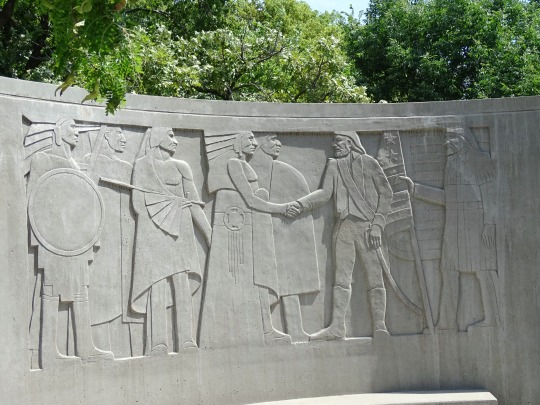
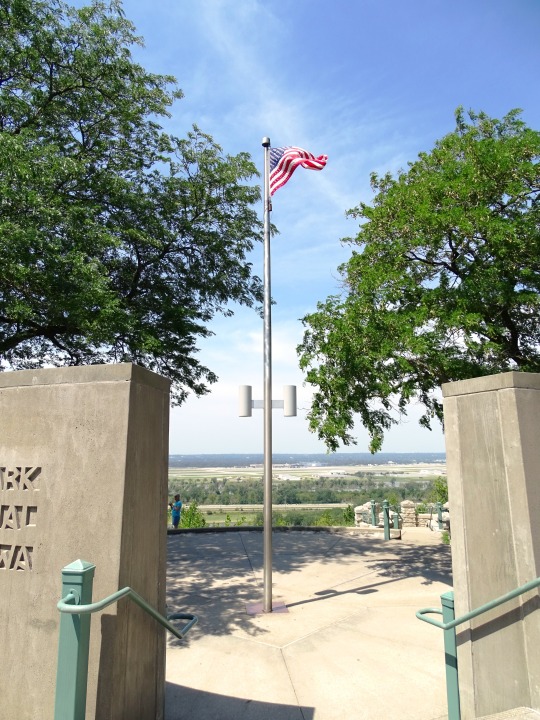
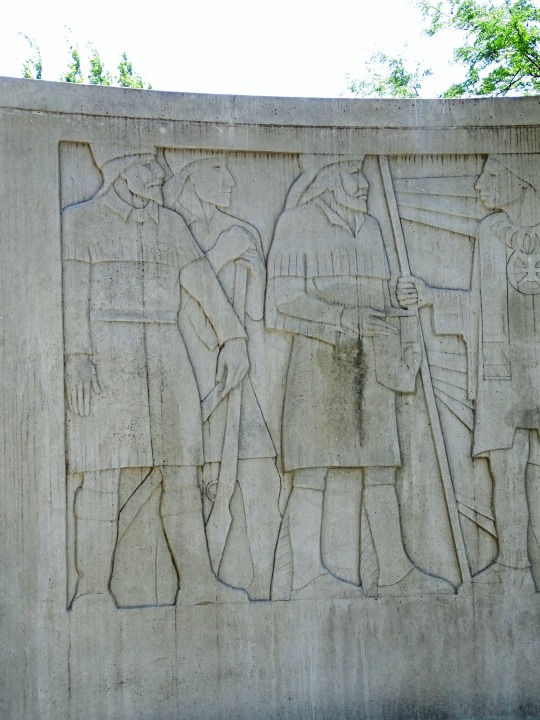
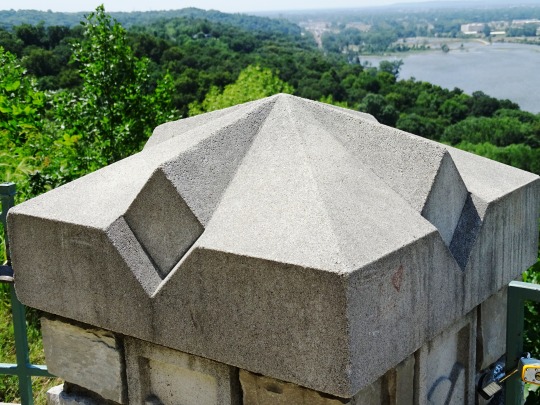
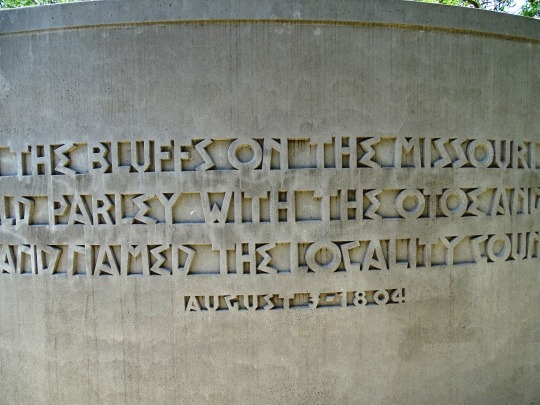
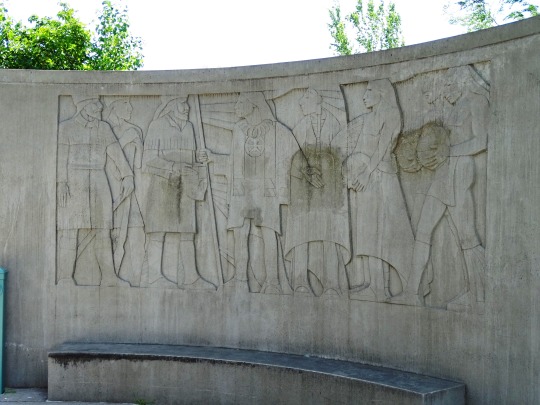
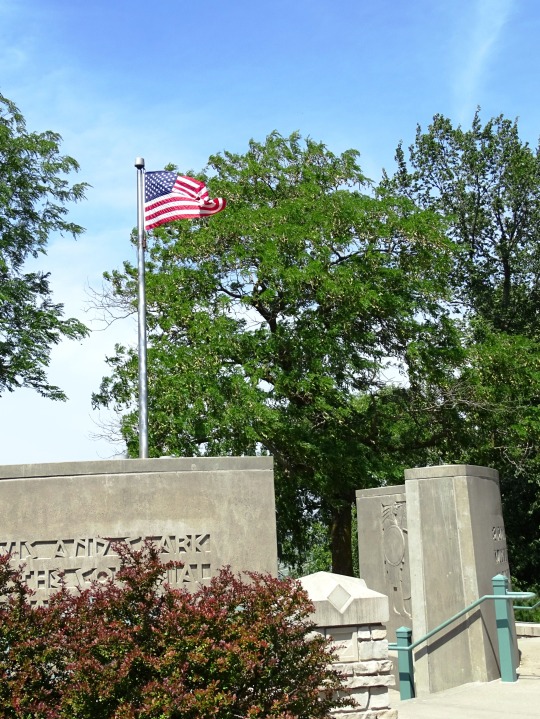
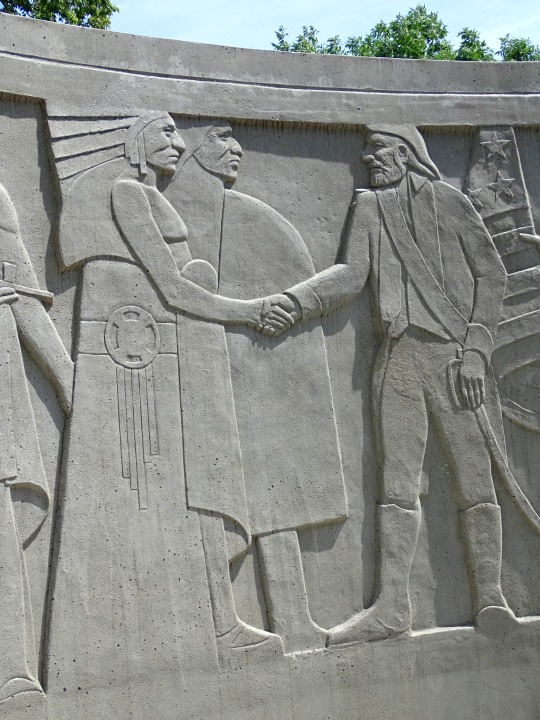
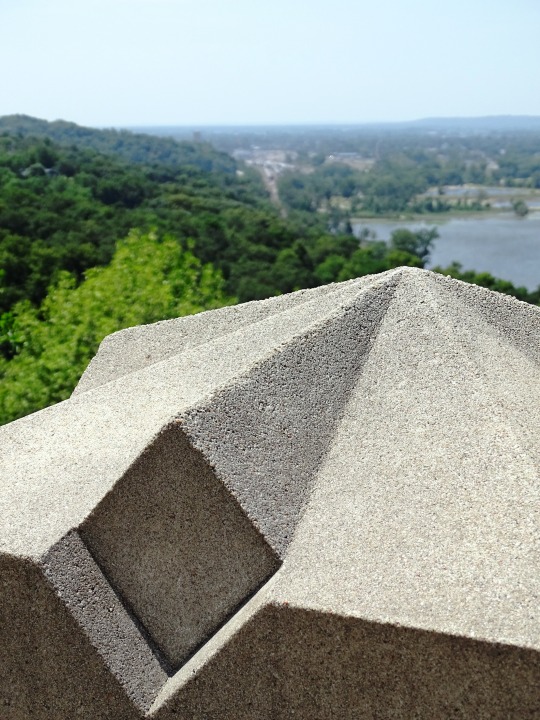
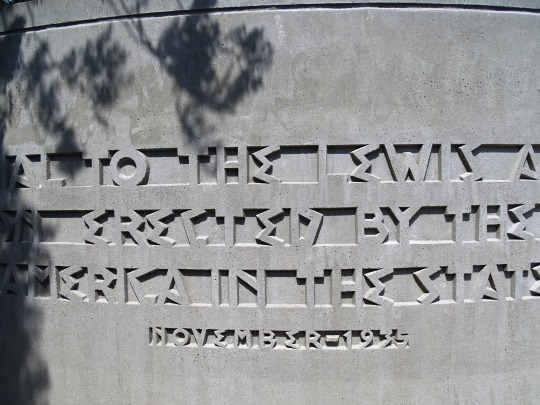
Lewis and Clark met the Otoe and Missouria tribe on August 3, 1804.
#Lewis and Clark Monument Park#Council Bluffs#Iowa#Midwestern USA#travel#Harry Edward Stinson#white colonialism#met#Otoe#Missouria#native american#white col#3 August 1804#anniversary#US history#USA#Nebraska#Missouri River#landscape#cityscape#Omaha#nature#summer 2019#original photography#tourist attraction#landmark#relief
1 note
·
View note
Link
Admirable Commercial Cleaning Services and cost in Omaha NE | A1 Cleaning Of Omaha
More information is at: https://cleaningcompanyomahane.com/commercial-cleaning-near-me/
Are you searching for commercial cleaning service in Omaha NE? A1 Cleaning Of Omaha guarantees the best commercial cleaning services in all areas of Omaha. You can improve the appearance and looks of any commercial property with our cleaning service. A well maintained and clean commercial property definitely makes the impression on others. We provide all cleaning services related to commercial cleaning services whenever you need us. We will be available at your door at the moment you will call us. Best commercial cleaning services of Omaha! Free estimates. Feel Free to Call us now or book online quickly!
REQUEST FREE ESTIMATES!
COMMERCIAL CLEANING SERVICES
Finding that dependable office cleaning company does not have to be a task that wears down your patience. A1 Cleaning Of Omaha. respects your business, your budget and your time.
A lot of time is spent at the office every day. It’s comforting to know it will be clean when you get to work. Our Professional office cleaning services are affordable and will keep your office consistently clean.
We are insured, bonded and carry workers’ compensation for your protection. We only send professionally trained employees to your property who have passed our reference and criminal background check.
We offer a full range of office cleaning services and we use our professionally trained cleaning staff to ensure your place of business is cleaned correctly, every time, guaranteed. Offices, Lunch rooms & restrooms are included in our standard cleaning procedures. Beyond that, we focus on areas of your office selected by you.
We only use non-toxic, biodegradable and antibacterial cleaning products which kills 99% of common germs. Stopping the spread of common colds, flues and helping maintain a healthy office environment.
OUR COMMERCIAL CLEANING SERVICES INCLUDE
· Office Cleaning
· Vacant Apartments
· Schools
· Medical Labs
· Construction Cleans
· Day Care
· Model Homes
· Restaurants
Office Cleaning
· Phones are sanitized
· Trash removal and proper disposal
· High dust removing cobwebs
· Dust shelving, window sills and fans
· Wash or polish desks
· Clean windows
· All carpet areas vacuumed
· Strip and wax floors
Breakroom / Lunchroom
· All appliances washed
· Lunch table and chairs washed and sanitized
· Vending machines dusted or washed if needed
· Trash removal and proper disposal
· Floors swept and mopped
· All carpet areas vacuumed
CALL US FOR:
· Commercial cleaning service tips
· Commercial cleaning service checklist
· Commercial cleaning services
· Commercial cleaning service cost
· Commercial cleaning companies near me
BEST COMMERCIAL CLEANING SERVICES COMPANY OF OMAHA NE
A1 CLEANING OF OMAHA
REQUEST MORE INFORMATION. CONTACT US NOW
CONTACT DETAILS
A1 CLEANING OF OMAHA
Call us at: (402) 810-6320
Website: cleaningcompanyomahane.com
Location: Omaha NE
Business Hours: 7AM- 11 PM
SERVICE AREA
Omaha, Carter Lake, Council Bluffs, Crescent, Bellevue, Boys Town, La Vista, Papillion, Honey Creek, Offutt A F B, Bennington, Fort Calhoun, Washington, Elkhorn, St Columbans, Underwood, Kennard, Mc Clelland, Mineola, Waterloo, Springfield, Missouri Valley, Treynor, Cedar Creek, Gretna, Blair, Valley, Neola, Pacific Junction, Plattsmouth, Silver City, Glenwood, Louisville, Yutan, Arlington, Minden, Modale, South Bend, Logan, Murray, Ashland, Mead, Persia, Memphis, Manley, Magnolia, Macedonia, Malvern, Fremont, Carson, Oakland, Herman, Murdock, Nickerson, Shelby, Weeping Water, Hastings, Mondamin, Henderson, Ithaca, Hancock, Nehawka, Tabor, Union, Greenwood, Thurman, Portsmouth, Woodbine, Colon, Wahoo, Avoca, Emerson, Winslow, Avoca, Elmwood, Little Sioux, Cedar Bluffs, Pisgah, Tekamah, Alvo, Randolph, Ames, Hooper, Panama, Craig, Waverly, Ceresco, Percival, Otoe, Imogene, Malmo, Sidney, Uehling, Walnut, Harlan, Westphalia, Eagle, Lincoln, Dunlap, Moorhead, Red Oak, Morse Bluff, Weston, Griswold, Blencoe, Earling, Davey, Dunbar, Nebraska City, North Bend, Unadilla, Elliott, Lewis, Prague, Syracuse, Marne, Scribner, Oakland, Palmyra, Pilot Grove, Walton, Riverton, Farragut, Shenandoah, Valparaiso, Lorton, Essex, Soldier, Hamburg, Defiance, Kirkman, Raymond, Dow City, Stanton, Atlantic, Decatur, Bennet, Elk Horn, Snyder, Lyons, Kimballton, Irwin, Arion, Malcolm, West Point, Panama, Roca, Dodge, Manilla, Yorktown, Northboro, Coin, Hickman, Denton, Bancroft, Aspinwall, Sprague, Clarinda, Martell, Blanchard, Manning, Beemer, College Springs, Shambaugh, Braddyville, 50022, 51432, 51446, 51447, 51454, 51455, 51501, 51502, 51503, 51510, 51520, 51521, 51523, 51525, 51526, 51527, 51528, 51529, 51530, 51531, 51532, 51533, 51534, 51535, 51536, 51537, 51540, 51541, 51542, 51543, 51544, 51545, 51546, 51548, 51549, 51550, 51551, 51552, 51553, 51554, 51555, 51556, 51557, 51558, 51559, 51560, 51561, 51562, 51563, 51564, 51565, 51566, 51570, 51571, 51572, 51573, 51575, 51576, 51577, 51578, 51579, 51591, 51593, 51601, 51602, 51603, 51630, 51631, 51632, 51636, 51637, 51638, 51639, 51640, 51645, 51647, 51648, 51649, 51650, 51651, 51652, 51653, 51654, 51656, 52648, 68002, 68003, 68004, 68005, 68007, 68008, 68009, 68010, 68015, 68016, 68017, 68018, 68019, 68020, 68022, 68023, 68025, 68026, 68028, 68029, 68031, 68033, 68034, 68037, 68038, 68040, 68041, 68042, 68044, 68045, 68046, 68048, 68050, 68056, 68057, 68058, 68059, 68061, 68063, 68064, 68065, 68066, 68068, 68069, 68070, 68072, 68073, 68101, 68102, 68103, 68104, 68105, 68106, 68107, 68108, 68109, 68110, 68111, 68112, 68113, 68114, 68116, 68117, 68118, 68119, 68120, 68122, 68123, 68124, 68127, 68128, 68130, 68131, 68132, 68133, 68134, 68135, 68136, 68137, 68138, 68139, 68142, 68144, 68145, 68147, 68152, 68154, 68155, 68157, 68164, 68172, 68175, 68176, 68178, 68179, 68180, 68181, 68182, 68183, 68197, 68198, 68304, 68307, 68317, 68336, 68339, 68346, 68347, 68349, 68366, 68372, 68382, 68402, 68403, 68404, 68407, 68409, 68410, 68413, 68417, 68418, 68419, 68428, 68430, 68438, 68446, 68454, 68455, 68461, 68462, 68463, 68501, 68502, 68503, 68504, 68505, 68506, 68507, 68508, 68509, 68510, 68512, 68514, 68516, 68517, 68520, 68521, 68522, 68523, 68524, 68526, 68527, 68528, 68529, 68531, 68532, 68542, 68583, 68588, 68621, 68633, 68648, 68649, 68664, 68716, 68788
1 note
·
View note
Text

First skateboards I painted 🪶
#nativemade#native art#native#indigenousmade#indigenous art#indigenous#yoeme#diné#otoe#otoe missouri#skateboard#painting#chiefpainintheass#whitefeatherx#littlechief arts#littlechief_arts#native women#landback
2 notes
·
View notes
Photo

Photocopy from George S. Morison's The Nebraska City Bridge, 1892. PARTIAL WEB ELEVATION AND PLAN OF DECK TRUSS - Nebraska City Bridge, Spanning Missouri River near Highway 2 between Nebraska & Iowa, Nebraska City, Otoe County, NE
2 notes
·
View notes
Text
BLATERATIO SIOVANA (I)
In the year 1500 or so, prior to European contact, the Siouan languages were spoken over a very wide range of North America east of the Rocky Mountains. Wikipedia gives the following map, which is a faithful reproduction of Ives Goddard’s map from Handbook of North American Indians Vol. 17: Languages.

The map itself is a massive, and gorgeous, wallpiece, with different language families marked in different colors and separated into the individual languages, but they’re not shown here.
When we think of Siouan, we generally think of the Lakota/Dakota/Nakoda Sioux, or perhaps the Osage, who live in the modern era on the Great Plains. It therefore comes as something of a surprise to learn that Siouan is actually an Eastern family, not a Plains one. The Proto-Siouan Urheimat��was probably in the Kentucky-West Virginia area; Catawba, its closest relative, was spoken in upstate South Carolina until the early 20th century; and we know that most of the Siouan languages spoken on the Plains got there relatively recently as white expansion pushed Native tribes westward. (For example, when we first meet the Dakota, in the 17th century, they live in the Chicago area--not South Dakota).
I don’t have a scan of the full map, but if you look at the map you’ll find that we have a pretty good idea of who lived where when they were contacted by Europeans in most of the continent (though that’s, of course, not always the same date everywhere, so the map doesn’t represent the linguistic situation at any given point of time. In the Southeast, however, there are vast swaths of “unknown”. We have a suspicion, for example, that the Carolinas were one of the most linguistically diverse areas in the world before contact. But what’s left? Cherokee, Tuscarora, Catawba (no longer around, but documented), a few words of Pamlico (Carolina Algonquian) and Woccon (a close relative of Catawba), and a couple words of Saponi. That’s it, for an area that probably had at least twenty languages split across several families if not thirty.
Obviously this lack of data speaks to countless humanitarian atrocities, but for the linguist, and especially the Siouanist, it presents another, though obviously less serious, problem. Our suspicions are that the majority of Siouan’s diversity resided in the Southeast at contact, but it’s all gone and nobody wrote it down, barring a lucky manuscript finding. And we don’t really have earlier stages of Siouan to check either. It’s rather as if we were trying to reconstruct Indo-European, but only possessed Romance, modern Irish and Welsh, Slavic and maybe Armenian or a modern Germanic language. (Luckily, Proto-Siouan is not as old as PIE, but, well, PIE is not really that old, either; if break-up was 4000-3500 BC, our earliest attestations of Hittite are 1500 BC, so we’re in the dark for only about two to two and a half thousand years.)
The following MSPaint diagram gives a relatively decent overview of the...current consensus regarding the internal divisions of Siouan.
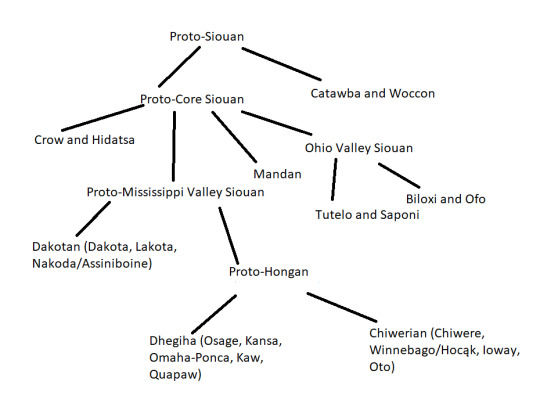
Catawba (spoken in upstate South Carolina until the 1940s or ‘50s) and Woccon (attested in a badly-written wordlist from the 17th century) represent a single subfamily that play the Anatolian to the rest of Siouan’s Latin/Greek/Sanskrit/Slavic/Baltic. This much is for certain. Catawba is well-documented, but unfortunately the High Priest of Catawba passed away unexpectedly just before his three-volume magnum opus was set to be published, which magnum opus now lingers in an archive in Philadelphia. So it goes.
Core Siouan (we could also just call this Siouan and call Siouan + Catawba Siouan-Catawba, but we’ll use the term Core Siouan) breaks up into four main branches (most of this is taken from Rory Larson’s 2016 article):
-Ohio Valley (or Southeastern Siouan). There are three decently-documented members of this branch (Biloxi, Ofo and Tutelo) and one attested by two words (Saponi, which must have been very close to Tutelo). There are only a couple of known shared sound changes that characterize Ohio Valley; one is the merger of the original Proto-Siouan glottalized fricatives *sˀ *šˀ *xˀ to their unglottalized counterparts, and another may have been the fortition of (the now merged, from *š and *šˀ) *š to /č/, but there were perhaps exceptions here.
Ohio Valley then splits into Tutelo-Saponi (fairly conservative barring a possible merger of *s and some instances of *š that didn’t change to /č/) and Ofo-Biloxi (characterized by a shared loss of word-initial *w and *h before a vowel).
Were there more members of Ohio Valley? Almost certainly. We know Ohio Valley was fairly conservative, but it’s not that well-documented--only Biloxi really got the full treatment; we have large gaps in our understanding of the morphology of the others. There may have been other Ohio Valleys; if we had them we’d know a heck of a lot more about Proto-Siouan. Unfortunately, we don’t.
--Crow-Hidatsa (also known as Missouri Valley)--wouldn’t Corvic be a snappier name? if we’re going to go down that route then the Meskwaki-Sauk-Kickapoo group of Algonquian should be Vulpic, but the Meskwaki generally prefer not being called the Fox anymore--seems to be strangely conservative and yet highly innovtive. Its two members, Crow and Hidatsa, split off from each other very recently. Corvic is characterized by a number of very unusual proposed changes, such as a metathesis change whereby the first two vowels of a word swap, *CV₁CV₂ > CV₂CV₁. Crow-Hidatsa (and Mandan) also undid “Carter’s Law.” This is worthy of a bit more discussion.
Proto-Siouan, you see, had a strong second-syllable stress rule. I have a suspicion that this probably got passed along to Great Lakes-area Algonquian--cf. Nishnaabemwin’s syncope rule [e.g. standard Ojibwe makkwa ‘bear’ > Nishnaabemwin mkkwa], or the second-syllable vowel-lengthening rule in Menominee [e.g. *aθemwa > anɛ:m]--Northern Algonquian is reported to have a strong first-syllable stress rule and, as this is also found in Arapaho (I think?) and maybe elsewhere, this is thought to be original, at least by Ives Goddard (p.c.). In any case, when a pre-Proto-Siouan stop *p *t or *k formed the onset of the second syllable of a word, it got preaspirated. There are surely Catawba cognates that can attest to this, but the point is that we basically only ever see preaspirates in second syllables. (This is somewhat obscured by the fact that the vowels of word-initial syllables often drops in the daughters, yielding clusters or, if there was no onset consonant, nothing at all)
But Mandan and Corvic appear to have undone Carter’s Law. This, combined with their odd-man-out nature (it’s just not really clear at all how they fit into things--Mandan may or may not be a wayward member of Mississippi Valley, but I think the consensus these days is “separate branch”--I need to send another email or two), suggests to me that maybe Carter’s Law wasn’t a Proto-Siouan rule at all and may have developed a bit later on, affecting Mississippi Valley and Ohio Valley but skipping Corvic and Mandan, so that no sound change needs to be proposed for those branches at all. Corvic and Mandan also have a change whereby *y and *r merge as /r/. This change is also found in Hocąk, so it might have been areal. (C.f. the change of *y to /čʰ/, which is found in Dakotan and...Ofo, spoken in Mississippi and Louisiana.)
(then again that could also be areal, since we first meet the Ofo in the Cincinnati area by the name of the Mosopelea, and that’s not that far from the Dakota who, as we’ve seen, were in Illinois at first contact)
I don’t think anybody’s tried to a study in shared lexical innovation in Siouan, but somebody should (maybe me), because there’s a lot of weird lexical innovation in Siouan and it would probably clear up questions like “what’s going on with Mandan?” A major source of this lexical innovation--and a major reason for Siouan being so frickin’ difficult to reconstruct--is the fact that Proto-Siouan had a lot of derivational prefixes, that a lot of basic lexical items ended up with different derivational prefixes in different daughters, and that because these derivational prefixes were now word-initial their vowels usually dropped and formed difficult-to-untangle clusters. (Doesn’t comparative Sino-Tibetan suffer from similar issues?)
Mandan, as noted, probably forms its own branch. It is most notable for having undergone a “swap” shift whereby PS *š becomes /s/ and *s becomes /š/.
Mississippi Valley forms the core of attested Siouan. It has three branches: Dakotan, Hongan (the Chiwere-Winnebago/Hocąk-Ioway-Oto group), and Dhegiha (Osage, Omaha-Ponca, etc.).
Mississippi Valley Siouan is characterized by the development of a very large number of onset clusters, but no coda consonants (except in a couple of daughters that deleted final vowels). Except for the preaspirates /hp ht hk/, their provenance is shakily understood other than that most of them seem to derive from initial-syllable syncope. E.g, if you attach the 1sg prefix *wa- onto a verb stem in h-, you get *wăh-, then *wh-, and then fortition of the *w to /p/, giving a postaspirate *pʰ.
Within Mississippi Valley Siouan we have some evidence that Dhegiha and Hongan form a subgroup (Dhegihongan?). I pushed a friend of mine into writing a term paper on this, possibly for reasons of selfish curiosity. The main phonological isogloss is the merger of *wR with *R (where *R is “funny *r,” a sound that appears to have been *r but which shows unusual reflexes)--Dakotan merges *wR with *wr. There’s also a debuccalization of *p to /h/ before *t, and an innovated 1pl inclusive patient prefix *wa-.
This is already getting to be rather long, so I think I’ll cut it here and go further in-depth into phonology in Part II...
22 notes
·
View notes
Text

#Inktober Day 4: Lewis and Clark held their first council with chiefs of the Oto and Missouri tribes at a site they called “council bluff,” located across and downriver from present-day Council Bluffs, Iowa. They made speeches, presented chiefs with Jefferson’s peace medals and other gifts, smoked and drank together. The chiefs seemed pleased and acknowledged their wishes for peace and future trade relationship.
10 notes
·
View notes